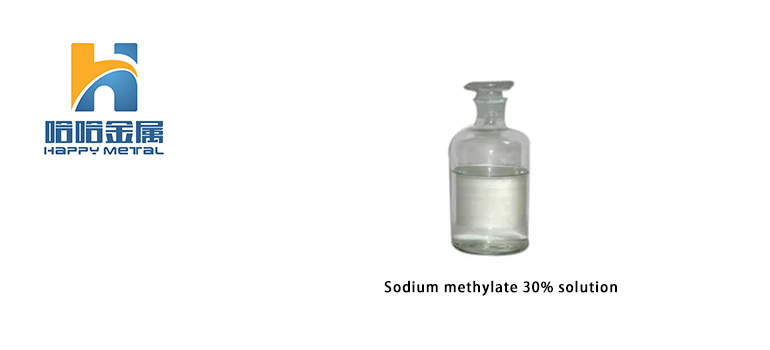Summary:
Everything You Need to Know About Sodium Methylate
What is Sodium Methylate 30% Solution?
Uses of Sodium Methylate
Advantages and Disadvantages of Sodium Methylate 30%
Sodium methylate 30% solution is a powerful and versatile compound that has a wide range of uses in different industries. From biodiesel production to pharmaceuticals and chemicals, this chemical composition plays a crucial role in many processes. In this article, we will delve into everything you need to know about sodium methylate, including its properties, uses, benefits, and potential drawbacks. We will also explore how this compound could contribute to more sustainable and eco-friendly plastic production.
What is Sodium Methylate 30% Solution?
Sodium methylate 30% solution is a liquid form of sodium methylate. It is made up of 30% sodium methylate and 70% methanol, a liquid that is used as a solvent and fuel. The concentration of sodium methylate in the solution can range from 20% to 33% depending on the intended use. Sodium methylate is a strong base that reacts with acids to form salts and with water to produce methanol and sodium hydroxide. The 30% solution of sodium methylate is the most used concentration in the industry.
Uses of Sodium Methylate
Sodium methylate has various uses in different industries due to its strong properties. Here are some of the common uses of sodium methylate:
Biodiesel production
Sodium methylate is a crucial catalyst in the production of biodiesel. It helps to break down the triglycerides present in vegetable oils and animal fats to produce methyl esters, which are then used as fuel. Biodiesel is a renewable and sustainable source of energy that is becoming more popular due to its low carbon emissions.
Pharmaceutical industry
Sodium methylate is used in the production of various drugs, such as anti-inflammatory drugs, antiseptics, and analgesics. It is also used in the production of vitamins and other health supplements. Sodium methylate is an important component in the synthesis of active pharmaceutical ingredients (APIs).
Chemical industry
Sodium methylate is used in the production of various chemicals, such as alcoholic solutions and many others chemical solutions. It should be noted that sodium methylate is a versatile compound that can be used in the production of various industrial chemicals.
Advantages and Disadvantages of Sodium Methylate 30%
Advantages
High reactivity
Sodium methylate is a highly reactive compound that can accelerate various chemical reactions. It is an efficient catalyst that can speed up the production process. Sodium methylate is also a strong base that can neutralize acidic substances.
Low cost
Sodium methylate is relatively inexpensive compared to other catalysts used in the industry. It is widely available and can be produced in big amounts. Sodium methylate is also a byproduct of the biodiesel production process, which reduces its cost further.
Eco-friendly
Sodium methylate is a green catalyst that can be used in the production of biodiesel, which is a renewable and sustainable source of energy. Biodiesel reduces greenhouse gas emissions and helps to mitigate climate change. Sodium methylate is also a non-toxic and biodegradable compound that has minimal impact on the environment.
In addition to its uses in biodiesel production, pharmaceuticals, and the chemical industry, sodium methylate 30% solution also has potential in the production of renewable plastics. Researchers have been investigating the use of sodium methylate as a catalyst in the synthesis of polyesters, which are used in the production of various types of plastics. This method of production is more sustainable and eco-friendlier than traditional methods, as it uses renewable resources and produces fewer harmful byproducts. With further research and development, sodium methylate could play a crucial role in the shift towards more sustainable and environmentally friendly plastic production. However, it is important to note that the handling and storage of sodium methylate in this context would require careful consideration to ensure safety and minimize environmental impact.
Disadvantages
Corrosive
Sodium methylate is a highly corrosive compound that can cause severe burns and skin irritation. It is also highly reactive with water, which can produce flammable hydrogen gas. Therefore, it requires careful handling and storage to prevent accidents.
Strong odor
Sodium methylate has a strong odor that can be unpleasant and irritating to the eyes and nose. This can cause discomfort to workers in the industry.
Health hazards
Sodium methylate is a hazardous substance that can cause health problems if not handled properly. It can cause respiratory problems, dizziness, and headaches if inhaled. It can also cause severe burns if it comes in contact with the skin.
In conclusion, sodium methylate is a useful and important compound that has a significant impact on various industries. It is essential to understand its properties, uses, advantages, and disadvantages to ensure safe and efficient handling in the industry. The production and use of sodium methylate should be regulated and monitored to prevent any adverse effects on the environment and human health.
You maybe interested in the following: Uncovering Sodium Phosphate in Food: Its Use, Safety, and Facts You May Not Know




